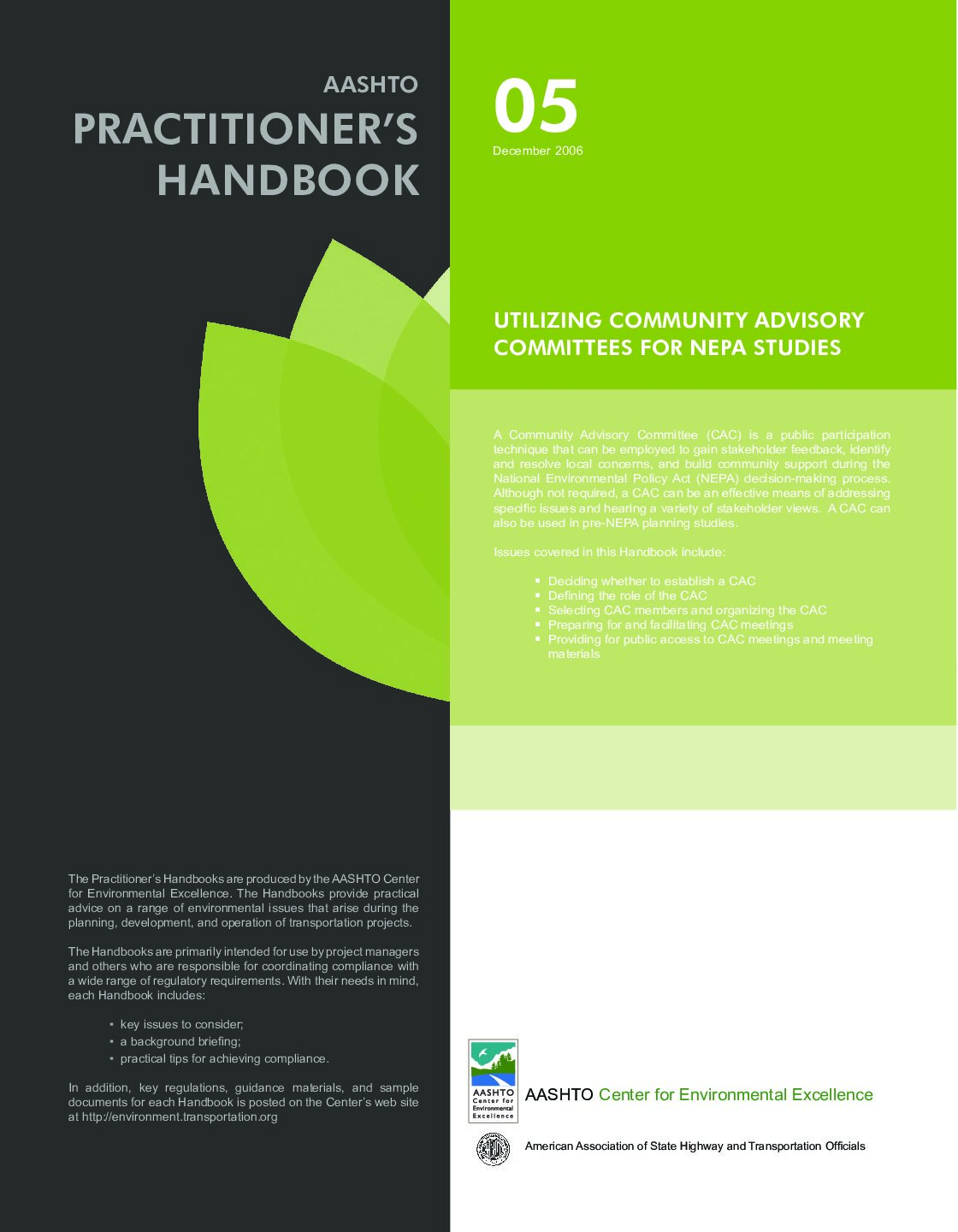A Community Advisory Committee (CAC) is a public participation technique that can be employed to gain stakeholder feedback, identify and resolve local concerns, and build community support during the National Environmental Policy Act (NEPA) decision-making process. Although not required, a CAC can be an effective means of addressing specific issues and hearing a variety of stakeholder views. A CAC can also be used in pre-NEPA planning studies.
Practical tips include deciding whether to establish a CAC, defining the role of the CAC, selecting CAC members and organizing the CAC, preparing for and facilitating CAC meetings, and providing for public access to CAC meetings.

